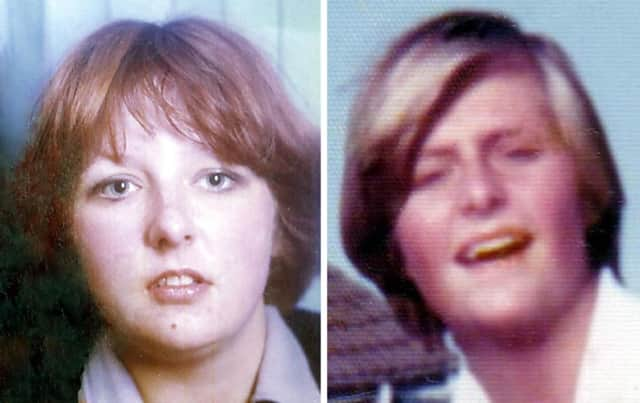World’s End trial: Court hears of DNA link


Angus Sinclair “cannot be excluded” as a contributor of minor DNA taken from swabs from the bodies of Helen Scott and Christine Eadie, the High Court at Livingston was told.
Sinclair, 69, denies raping and murdering the teenagers, both 17, who were last seen at the World’s End pub in Edinburgh on 15 October, 1977.
Advertisement
Hide AdAdvertisement
Hide AdHe is accused of carrying out the attacks along with his brother-in-law, Gordon Hamilton, who is now dead. Forensic scientist Susan Ure, 42, said she analysed four swabs taken from Helen’s body. They matched the DNA profile of Hamilton.
One of the swabs contained a minor DNA profile of another individual at a lower level. Ms Ure said: “If you assume that this DNA is originated from one individual, Angus Sinclair cannot be excluded as a contributor of this minor DNA component.”
Her analysis concluded it was approximately 106 times more likely that Sinclair was the source of the DNA, compared with another individual.
The court was also told about three swabs taken from Christine’s body. Two produced full matches with Hamilton’s profile, as well as “weak indications” of DNA from another individual. The court heard Sinclair was, in reference to one swab, said to be 45 times more likely to be the source of that minor DNA than someone else.
Earlier, the court heard there was “strong evidence” Helen had stood or walked in the East Lothian wheatfield where her body was found. The court has already heard that Christine’s body was found at around 2:25pm on 16 October, 1977, at Gosford Bay, Aberlady, while Helen’s body was discovered at around 6pm that day in the field near Haddington.
Professor Lorna Dawson, 56, a forensic soil scientist at the James Hutton Institute, said she analysed samples taken from Helen’s feet, as well as soil samples taken in 1977 and this year.
She said the presence of organic and inorganic matter within soil can give it a type of “signature’’ providing possible information about where it may have come from.
She compiled two reports earlier this year. In one, she concluded “the soles of Scott’s feet had come into contact with a wheatfield’’ and that her feet had picked up debris “consistent with having come from a grassy environment’’.
Advertisement
Hide AdAdvertisement
Hide AdShe concluded there was “strong evidence that Helen Anne Scott had likely stood or walked in the wheatfield at Huntington/Coates’’.
The trial continues
SEE ALSO